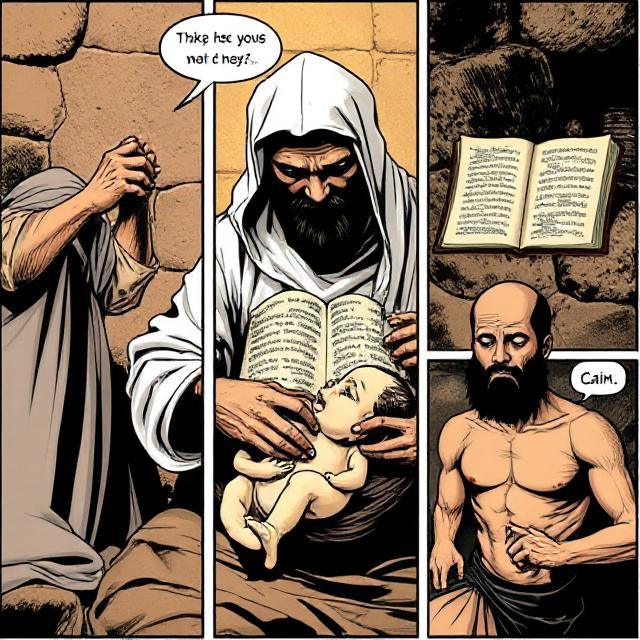Penis Circumcision as Biblical Mark of Cain
The idea that “the mark of Cain” refers to a circumcised penis is not a mainstream interpretation, but it has been suggested in esoteric, psychoanalytic, and anti-circumcision critiques of religion and ritual.
Canonical Biblical Account:
In Genesis 4:15, after Cain kills Abel, God puts a “mark” on Cain:
“And the Lord set a mark upon Cain, lest any finding him should kill him.”
The exact nature of the mark is not specified in the Bible. Interpretations range from:
- A physical sign or scar
- A symbolic curse or spiritual distinction
- A protective seal from divine punishment
Historical & Esoteric Interpretations:
1. Circumcision as a “Mark”
- In Genesis 17, circumcision is explicitly called a covenant mark between God and Abraham’s descendants.
- Some argue that this mark is symbolically linked to earlier stories, including Cain’s — as an inherited or imposed sign of guilt, submission, or ownership.
- Certain critics of circumcision, particularly in modern anti-circumcision or “intactivist” circles, connect it metaphorically to the “mark of Cain” as a punishment or control mechanism.
2. Freudian and Psychoanalytic Readings
- Some psychoanalytic interpretations suggest circumcision represents castration anxiety, a symbolic removal of male potency.
- In this view, Cain (as the first “marked” man) becomes a prototype for male guilt, with circumcision being a ritual continuation.
3. Kabbalistic and Gnostic Views
- Certain Kabbalistic texts link Cain to flawed or corrupted spiritual lineages and associate him with impurity or spiritual error.
- In Gnostic interpretations, Cain is sometimes portrayed as a victim or misunderstood figure, with the “mark” being a symbol of divine knowledge or rebellion — possibly inverted into a mark of distinction.
Modern Symbolic/Political Interpretations:
- In radical critiques of religion, especially those opposing genital cutting, circumcision is sometimes equated to a “mark of submission”, punishment, or trauma.
- In this frame, the “mark of Cain” becomes a metaphor for a ritualized scar inflicted by authoritarian religion.
Summary:
No, the Bible does not say the “mark of Cain” is circumcision.
But yes, some modern esoteric, psychoanalytic, and symbolic interpretations — particularly those critical of ritual circumcision — have drawn that connection.
Remover of Cut Foreskin
A mohel (sometimes spelled moiyel in Yiddish-influenced pronunciation) is a Jewish individual trained to perform the brit milah (bris), the religious circumcision ceremony of a male infant on the eighth day after birth, as commanded in the Torah (Genesis 17:10–12 and Leviticus 12:3).
